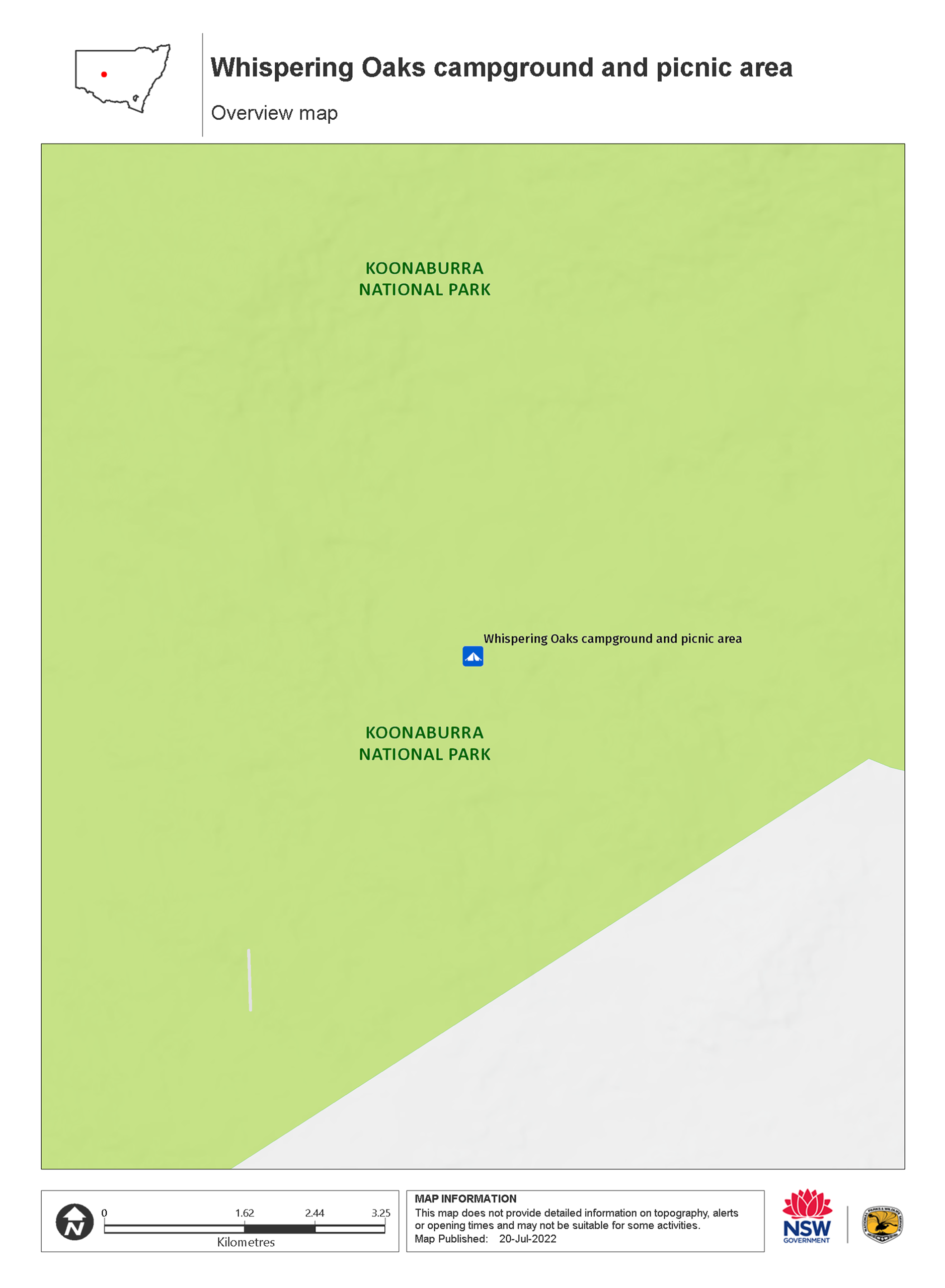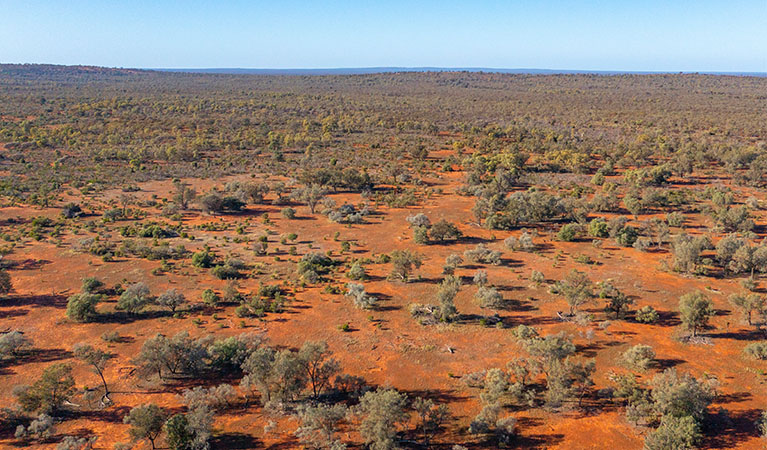Whispering Oaks campground and picnic area
Koonaburra National Park
Overview
Whispering Oaks campground and picnic area is perfect for an outback camping experience. Located 2 hours from Cobar, bring your caravan or tent and set up camp among the trees.
| Number of campsites | 6 |
|---|---|
| Camping type | Camper trailer site, Caravan site, Tent, Camping beside my vehicle |
| Facilities | Picnic tables, barbecue facilities, carpark, toilets |
| What to bring | Drinking water, cooking water, firewood, fuel stove, toilet paper, torch, food supplies, first aid kit, personal locator beacon, gps, insect repellent, sunscreen |
| Bookings | Book up to 12 people or 2 sites online. |
| Group bookings | This campground is not suitable for group bookings. |
| Please note |
|
Ideal for nature lovers and bird watchers, Whispering Oaks campground and picnic area provides an authentic outback camping experience. Remote, quiet and peaceful, you can relax and reconnect with nature.
Set up your tent, caravan or camper trailer among the trees, and enjoy your meals on the shaded picnic tables. During the day head off on a walk through the bush, keeping your eyes open for emus, red kangaroos and eastern grey kangaroos as they roam among the vegetation. And at night look to the sky and take in the impressive view of the stars, thanks to the minimal light pollution.
Spring and autumn are great times to visit, as you avoid the hot summer days and cold winter nights. Winter has its own charm though, as you cosy up around the campfire and admire the cold nights, which can sometimes dip below zero.
Map

Map legend

Local alerts
For the latest updates on fires, closures and other alerts in this area, see https://uat.nswparks.cloud/camping-and-accommodation/campgrounds/whispering-oaks-campground-and-picnic-area/local-alerts
Bookings
- National Parks Contact Centre
- 7am to 7pm daily
- 1300 072 757 (13000 PARKS) for the cost of a local call within Australia excluding mobiles
- parks.info@environment.nsw.gov.au
Operated by
- Dubbo office
- Monday to Friday, 8.30am to 4.30pm.
- 02 6841 7100
- npws.centralwest@environment.nsw.gov.au
- 74 River Street, Dubbo, NSW 2830
Park info
- in Koonaburra National Park in the Outback NSW region
Koonaburra National Park is always open but may have to close at times due to poor weather or fire danger.
Visitor info
All the practical information you need to know about the Whispering Oaks campground and picnic area.
Maps and downloads
Learn more
Whispering Oaks campground and picnic area is in Koonaburra National Park. Here are just some of the reasons why this park is special:
Sandplain and dune field country

Koonaburra National Park includes an extensive area of sandplain and dune field country, featuring a vast network of water sources. These water depressions, also known as gilgais or melon holes, act as important water sources for many species. The park supports habitat for 30 threatened animal species, including the Major Mitchell cockatoo, malleefowl and fat-tailed dunnart. It also contains 2 threatened ecological communities, acacia melvillei shrubland and sandhill pine woodland.
Plants and animals protected in this park
Animals
-

Emu (Dromaius novaehollandiae)
The largest of Australian birds, the emu stands up to 2m high and is the second largest bird in the world, after the ostrich. Emus live in pairs or family groups. The male emu incubates and rears the young, which will stay with the adult emus for up to 2 years.
-

Red kangaroo (Macropus rufus)
The red kangaroo is one of the most iconic Australian animals and the largest marsupial in the world. Large males have reddish fur and can reach a height of 2m, while females are considerably smaller and have blue-grey fur. Red kangaroos are herbivores and mainly eat grass.
-

Wedge-tailed eagle (Aquila audax)
With a wingspan of up to 2.5m, the wedge-tailed eagle is Australia’s largest bird of prey. These Australian animals are found in woodlands across NSW, and have the ability to soar to heights of over 2km. If you’re bird watching, look out for the distinctive diamond-shaped tail of the eagle.
Plants
-

Mulga (Acacia aneura)
Mulga are hardy Australian native plants found throughout inland Australia. With an unusually long tap root, the mulga is able to withstand long periods of drought.

